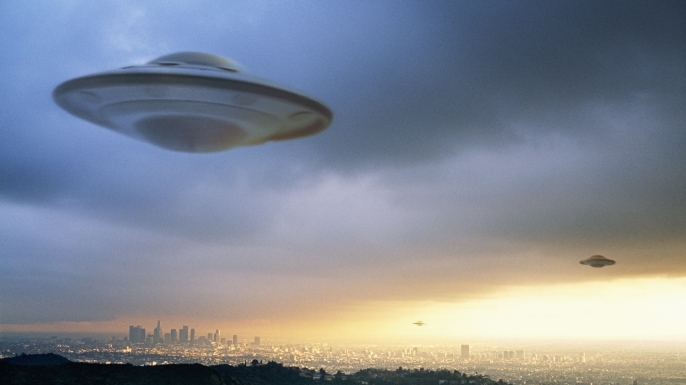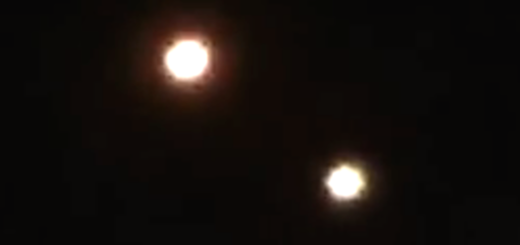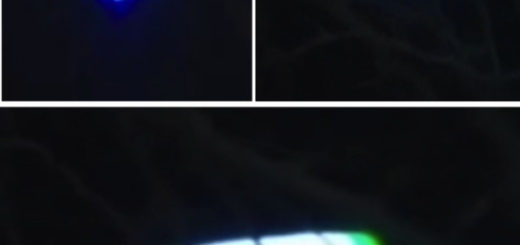A History of UFO Research, Part 1

Although the United States has had it’s share of UFO sightings, we are not the only country to record this phenomenon. In fact, there is evidence to suggest that the United States has fewer sightings than some other countries. Worldwide statistics on the number of sightings are difficult to round up and incomplete. Most other countries looked to the United States Air Force to investigate UFOs and did not keep records of their own local sightings. Therefore, we can give only a rough approximation of the number of sightings and the dates of sighting waves around the world.
Reports of UFO sightings before the nineteenth century are often filled with unsubstantial information. The further back we go, the less hard data there is to work with, and the more we are forced to speculate. Before the mid0-nineteenth century, most non-scholars would probably have thought that any unusual circumstance in the sky was a religious experience.
Many UFO researchers point to the “miracle of Fatima,” which occurred in Portugal in 1917, as a perfect example of ascribing religious connotations to a possible UFO sighting. Although controversial, the sighting’s circumstances were interesting. An assembled crowd of people, having been told by three little girls that the Virgin Mary would appear on a certain date and at a certain location, witnessed what they described as “the Sun” moving out of it’s position , coming close to the Earth, wobbling, moving to and fro, and then retreating back to it’s original position. The “miracle” occurred in 1917 with thousands of witnesses, but UFO researchers, historians of religion, and the Catholic Church have not been able to prove exactly what did happen that day, and the controversy continues.
If a twentieth-century European sighting can stir debate and controversy, then discovering the facts of earlier sightings of aerial apparitions is virtually impossible. The researcher has to rely on speculation and guesswork, simply because he is ignorant of the facts. The more facts he has, the less he has to rely on speculation. Consequently, sightings of unusual objects in the sky in the late nineteenth and twentieth centuries can be verified much more easily.
The first wave of European UFO sightings that we know of occurred in England in 1909. The British reported seeing objects shaped like dirigibles and equipped with strong searchlights, and that performed technologically advanced maneuvers (sharp turns, hovering, ect…). There were even reports of landings and occupants. These reports were similar to a wave of sightings in America in 1896 – 1897.
The next wave of UFO sightings came in the early 1930s when reports of mysterious “ghost fliers” in northern Sweden prompted a lively debate in the Swedish press about which pilot was crazy enough to circle a town for hours in a snowstorm without attempting to land, among other foolhardy activities. The “airplanes” that were sighted seemed of “normal” configuration for the time, but their lack of identifying markings, their unusual flight behavior, the beams of light reported to emanate from them, their apparent lack of intent to land, and the inability of the Swedish authorities to identify any of the planes or their pilots after a thorough investigation, all place these sightings squarely in the realm of unidentified flying objects.2
In World War II, strange phenomena occurred in both the Pacific and Atlantic theaters of war. Objects known as “foo fighters” caused considerable discussion and anxiety among Allied bomber and fighter pilots. The “foo fighters” were round glowing objects which chased, paced, “played tag with,” or circled bombers and fighter planes. Some of the objects were undoubtedly what sailors and astrophysicists call St. Elmo’s fire, but many of the sightings were of actual objects that displayed no characteristics of St. Elmo’s fire and remain unexplained. These objects would come toward a plane from off in the distance, follow for some time, and finally veer off and leave the area. At first the Allies thought the objects were either German or Japanese secret weapons, depending on where they were seen. But when the objects did not seem hostile, the Allies began to think they were psychological weapons sent up to exasperate Allied pilots. After the war, it was learned that the Germans and the Japanese thought the objects were American secret weapons.3
Swedish “ghost rocket” sightings started in 1946. Thousands of witnesses observed rocket-like objects streaking through the air. The objects followed flat trajectories, and no artifacts or crashed “rockets” were ever found. The United States sent General Doolittle to Sweden to help investigate the sightings, because the Americans felt that the objects might be Russian secret weapons sent from Finland or from the captured German rocket proving ground at Peenemünde. Eventually, the Swedish government decided that, since there were no crashed rockets, the sightings must be considered misidentifications of natural phenomena or the results of mass hallucination.
In 1947, the American wave of twentieth-century sightings began. Since these sightings, the world has been continually involved with the UFO enigma.4
UFO sightings occur in waves. The largest and most intense European wave of sightings, and quite possibly the largest wave of UFO sightings ever, took place in France in 1954. These French sightings produced an abundance of reports of landings and occupants – the most recorded for a single area. They were thoroughly investigated by the leading European UFO researcher, Aimé Michel. His two books, published in America as The Truth About Flying Saucers and Flying Saucers and the Straight Line Mystery are considered classics in the field. In Flying Saucers and the Straight Line Mystery, Michel posited the existence of “grid lines” around the world. He felt that the reports of UFOs could be concentrated along these grid lines, although not necessarily chronologically. In other words, UFOs might be sighted within a mile of a straight line across France at different times, even as much as a year apart. He called his theory “orthotony,” and this idea has been recently developed by University of Colorado psychologist Davis Saunders, whose statistical studies of orthotony have shown that Michel’s work might be of great significance.
Recently, France has been having a full-scale scientific debate about UFOs, prompted by the appearance in scientific journals of two articles on the subject by leading French scientists. The furor has led to speculation that the French government is now sponsoring a discreet, low-keyed study of UFOs. In late 1973 and early 1974, there was another heavy wave of UFO sightings in France, and the debate continues.
Latin America is the international leader in sightings. Brazil, probably because of the size of the country, accounts for the majority of Latin American UFO reports, followed by Argentina, Chile, Peru, Venezuela, and Uruguay. The tremendous number of sightings that these countries have recorded has led to a much more casual acceptance by the general populace of the idea of extraterrestrial visitation. That is not to say, however, that the scientific and academic community takes the subject seriously; there is still a tremendous stigma attached to the scientific study of UFOs in all countries.
In Brazil, recently, a potentially significant case occurred and is still under investigation. Sensational and bizarre as it may seem, it falls into a definite pattern of UFO close-encounter-physical-effect cases, and it has circumstantial evidence to increase it’s credibility. Nonetheless, the careful investigator cannot make a judgment on this case until all the facts have been thoroughly checked. This case was filed with the Aerial Phenomenon Research Organization by Brazilian UFO investigator Mrs. Irene Granchi.5 The case begins in a routine manner. At about 3:00 A.M. on May 22, 1973, Onilson Papero – forty-one years old, married, two daughters; Organizer of Public Libraries for the State of Sao Paulo, Brazil – was driving to his home in Catanduva. He had dropped off a hitchhiker a few miles north of the town. It was raining that night, and Papero was traveling around 55 miles per hour. His radio was on, and as he approached the slope of a hill, the radio began to fade. He turned it on and off to try to steady it. At the same time, his car engine started to sputter and miss, so he geared down to second for more power.
As soon as he had done this he looked over and saw a bright blue circle of light, about 20 centimeters in diameter inside the car. The light moved slowly across his instrument panel, across the seat, a locked suitcase (which contained personal papers), the car floor, and Papero’s legs. When the light was on the instrument panel, Papero had the impression of being able to see right through the circle of light to the engine. Puzzled, he immediately began to search for “normal” answers to this abnormal circumstance by wondering how the Moon could present such a strange optical illusion. Then he remembered that there was no Moon that night because of the rain and clouds.
As he was thinking this, he suddenly noticed a bright blue luminous line of light directed at him from the top of the hill he was going up. The origin of the light seemed to be rapidly approaching and growing brighter. Papero immediately thought that this must be a truck coming towards him; he pulled off to the shoulder of the road and flashed his lights at the truck to help prevent a collision. The light, however, was unaffected and continued to approach his car. So, anticipating an accident, he took off his glasses and bent down in the car, shielding his head with his arms and hands. He stayed like this for a moment and then, realizing the truck had not passed, looked up and immediately saw an object hovering about thirty-five feet in the sky and fifty feet away from him. This must be a helicopter in the process of landing, Papero thought. He began to feel very hot and stuffy; he needed air. He opened the door and got out of the car for relief, but it was just as hot outside, with the same sensation of the lack of adequate air.
He looked up again and heard a buzzing sound. At this point Papero realized that he was not observing a helicopter. The object looked like “two upside-down soup plates” about twenty-five feet thick and thirty-six feet wide. It was dull-dark gray, but Papero could not make out structural details. The entire area was illuminated, but Papero could not see the source of the light. He still felt the heat and stuffiness. As he watched the object, he noticed a “transparent curtain” slowly encircling the object from the right side to the left. When it completely encircled the object, the sensation of heat and lack of air ended. As this occurred, a “tube” came out of the object’s bottom and stretched towards the ground.
The thought suddenly went through Papero’s mind that might be kidnapped. He panicked and began to run away from the object into the woods. He had run about a hundred feet when he felt something was holding him back. It was like a “rubber lasso” around him. He frantically tried to get away from the thing holding him back by waving his arms in back of him, but when he did this he found that there was nothing physical behind him.
He turned and looked back at his car. A “blue tube-like torch of light” about seven inches in diameter was coming from the bottom of the object’s “brim.” When the light struck Papero’s car, it seemed to become transparent. He claimed to be able to see the engine, the seats, and all other parts of his car. Papero’s mind raced. Unable to grasp what he was seeing, he automatically began to think “mundane” thoughts – his car might be “melted,” and he had not finished the payments on it yet. Either because of what he saw was too much for his mind to accept or because of a physical reason, Papero fainted.
An hour later, two young men in their early twenties drove by in their Volkswagen station wagon. They saw Papero lying face down in the rushing water created by the rain. They saw the car with it’s headlights on and the right front door open; thinking that there had possibly been a murder or assault, they did not stop but drove straight through to Catanduva. When they arrived, they went directly to a policeman and told him what they had seen.
The officer went with them back to the scene. When they arrived at around 5:00 A.M., Papero was still lying unconscious in the rain. They found a road map of northern Brazil on the ground in front of the car. Inside the car they discovered that Papero’s suitcase was now open, with the contents – checks, photographs, papers, ect… – strewn about inside the car. They went over to examine Papero and found no evidence of wounds on him. They turned him over and Papero regained consciousness.
When he awoke he was panicky and began to struggle with the three men, probably believing them to be the kidnappers. When he was calmed he told them what had happened and confirmed the fact that the map, checks, papers, and photographs had been inside his locked suitcase and the key was still in his pocket. Nothing had been stolen, and his car operated normally. The officer took Papero to a local hospital in Catanduva. He spent the day there under observation but nothing appeared to be wrong, so the doctor sent him home that evening after prescribing a sedative.
That same afternoon, however, while Papero was still in the hospital, he noticed a slight itch on his back and stomach. The next day, the skin areas that had itched began to turn into irregularly shaped, painless, purplish-blue spots. They were large and especially visible on his buttocks and hips. Later, the spots began to turn yellowish – much like bruises. Papero eventually went to São Paulo to undergo a complete medical examination. Dr. Max Berezonski conducted the examination and stated that Papero’s mental attitude and ability to relate to his environment were normal. After running a battery of tests on Papero – including a glucose count, potassium, sodium, urea, bilirubin, phosphorus, calcium, hemoglobin coagulating period, and bloodletting, and a biopsy of the affected skin areas – the physician could find nothing to physically account for the spots. The physician also took an electroencephalogram, which was normal.
Later, two regressive hypnotic sessions revealed information about what had happened to Papero while he was unconscious. At this date, however, that information has not yet been made public. Although a highly unusual and rare case, it can be seen as fitting a pattern of worldwide close-encounter cases and might be paralleled in the United States by the celebrated Barney and Betty Hill case in 1961.
The Soviet Union also has had an interest in UFOs. In 1966, it had one of it’s first massive UFO sighting waves. Although, details are incomplete, it appears that the government lent it’s support to a study of the phenomenon by Soviet astronomer F. U. Zigel. Zigel was enthusiastic about the study and even made public statements to the effect that the UFOs might be extraterrestrial. However, before the study could be mounted, the Soviet government mysteriously withdrew it’s support and abruptly it ended.
Perhaps one of the most vivid and strangest occupant cases occurred in Boinani, New Guinea, in 1959. The witnesses were Reverend William B. Gill, his assistants, and the entire student body of a missionary school – about twenty-seven witnesses.
Reverend Gill and the people of the area had been seeing what they called “talley lights” or lanterns hanging in the sky practically every night for several weeks before the main sighting. There had even been some daytime sightings beforehand. On June 27, 1959, Reverend Gill implored to come outside and observe the strange object hanging in the air a few hundred yards away from the school house. Gill and his assistants went outside and saw an oval-0shaped object with landing gear. There was a platform on top of it – something like an observation deck. The object rose and left the area.
The next day the object returned. This time it slowly lowered to the ground as the astounded witnesses looked on from about fifty yards away. As it lowered, the witnesses noticed “men” walking on the platform on top of the object. They seemed preoccupied with some task – as if they were repairing something. As one occupant worked, the other occupant looked a Reverend Gill and the other observers. Spontaneously, Reverend Gill waved his arm above his head to signal the UFO occupants. Suddenly, the occupant raised his arms above his head as if he were either reciprocating the movement or signaling also. Reverend Gill repeated the gesture and so did the occupant. Then all the witnesses began to wave their arms and the occupant waved his arms again. Finally, the object raised up and flew straight off into the sky.
Later Reverend Gill questioned each witness to verify the facts of the sighting, took measurements in an attempt to determine the size of the object and the occupants, and the distance they were from the witnesses. His lengthy, well-reasoned, and well-researched report constitutes one of the most famous and well documented Pacific cases.6
In late 1972 and early 1973, UFO sightings were reported in Africa (particularly South Africa), Latin America, Eastern Europe, Canada, and Australia.
The wave of sightings in Africa was highlighted when President Amin of Uganda and scores of witnesses saw a “spectacular object” covered with something like “smoke” come down from the sky, splash into a lake, and then emerge from the lake and fly straight up and out of sight. President Amin decided this was of great significance and a good luck sign. He urged all the witnesses of the event to attend prayers.7
No matter where people report UFO sightings, all the reports share common features. They fall into narrowly defined, established patterns. The human mind is capable of imagining a virtual infinity of objects to fly through the sky. This does not happen. Although one of the interesting aspects of the UFO phenomenon is the great variety of sizes and shapes that people report, these people do not see apartment houses with wings, upside-down elephants, chairs, three-hundred-foot-long mosquitoes, or television sets winging their way across the sky. They do see basically geometric objects self-illuminated or with lights attached. They see objects with strange configurations and difficult-to-describe colors. They see those objects performing maneuvers which appear to be either controlled or random. They see these objects at various altitudes in the sky. Sometimes they see these objects at low levels or on the ground. When on or near the ground some people claim to see “occupants” of these objects. Sometimes there are physical effects, as in the Brazilian case. Sometimes the objects leave markings on the ground after they have landed and taken off.
Whatever the case, the foreign cases are exactly the same as the American cases, regardless of whether the sightings occur in large cities, rural areas, industrial nations, developing nations, or Pacific Islands. The witnesses to these occurrences cut across all educational, cultural, ethnic, religious, and class lines. The UFO phenomena is worldwide.
As in America, many other countries have strong private UFO-investigating organizations which catalogue and analyze the cases reported to them. Some of the best periodicals are published abroad – notably the British Flying Saucer Review and the French Lumières dans la Nuit.
As interesting as worldwide or historical sightings may be to read about, they still can seem quite remote, unreal, and improbable to the more skeptical American mind. A report from a farmer in England or France, or an intriguing incident from the past, no matter how well documented, will ever be as real or as believable as a first-hand story told by a credible neighbor down the block, or better yet, as impactful as a first-hand experience.



 Creators of mankind
Creators of mankind Description of “Tall white aliens”
Description of “Tall white aliens” Where they came from?
Where they came from? About hostile civilizations
About hostile civilizations The war for the Earth
The war for the Earth “Tall white aliens” about eternal life
“Tall white aliens” about eternal life Video: “Nordic aliens”
Video: “Nordic aliens” Aliens
Aliens Alien encounters
Alien encounters The aliens base
The aliens base UFO
UFO Technology UFO
Technology UFO Underground civilization
Underground civilization Ancient alien artifacts
Ancient alien artifacts Military and UFO
Military and UFO Mysteries and hypotheses
Mysteries and hypotheses Scientific facts
Scientific facts


















